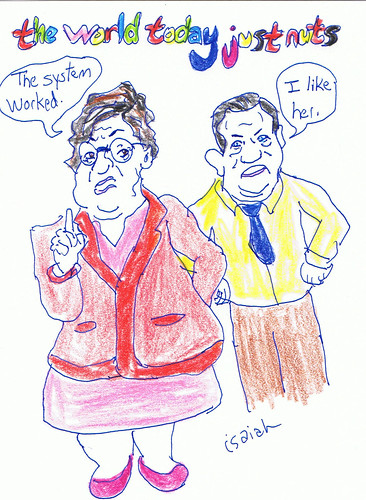
And Janet Napolitano is still in the news. And she will not live her phrase down. She can speak of context, being misquoted, you name it. She said it. It is on her.
Today I listened to WBAI's The Arts Magazine which focused on Marx At The Movies today. Click here for WBAI archives and it is under 2:00 p.m. for today's broadcasts. I wish WBAI would keep their programs up longer than 89 days (it is no longer even 90).
It was a very entertaining hour. The blacklist was discussed included Karen Morley who was blacklisted for refusing to answer McCarthyism questions. She went on to run for office on the American Labor Party's ticket in 1954.
Louis Proyect was the guest for the first half hour. C.I. includes Mr. Proyect in the Iraq snapshots from time to time. This was my first time hearing Mr. Proyect on the radio and I found him to be a very entertaining guest and wondered why I -- with all my hours and hours and hours of listening to Pacifica Radio had not heard him before?
They addressed the James Cameron film. Gilad Atzmon reviewed the film at Dissident Voice ("A Humanist Call from Mt. Hollywood"). I did disagree with the call thatThe Hurt Locker has no point of view. I would suggest they both go back and watch again. But that is fine, we can disagree. And we agreed on "King Rat" at least. Elia Kazan. I cannot draw a line between the man and his art, sorry. I think he did a despicable thing (naming names, etc.) and really did not believe that there was any comeback from that.Click here for Mr. Proyect's view of 2009 in films.
A woman was the guest for the second half hour and they spoke more about the blacklist in that section and also had a lively discussion on how (badly) mothers were portrayed in 2009.
Ruth's Report
An excellent show. I was driving into NYC, and could concentrate on it. Packed with good info, wished I had been able to write down all the movie titles you mentioned, you presented an excellent context for the reviews. Congrats.
B. Aziz












